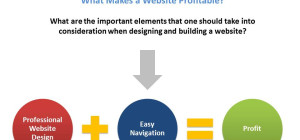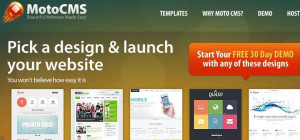In today’s digital age, e-commerce platforms like Flipkart and Amazon have revolutionized how we shop. These tech giants have created seamless online shopping experiences, offering a vast range of products, convenient payment options, and efficient delivery services. If you’re an aspiring startup looking to venture into the e-commerce industry, developing a marketplace website can be an exciting and rewarding strategy. However, you must hire a trusted eCommerce web development company to do so. In this blog post, we’ll provide you with beneficial tips on how to develop a website similar to these successful platforms.
10 Essential Tips to Developing an eCommerce Marketplace
Conduct Market Research
Before embarking on your website development journey, it’s crucial to conduct thorough market research. Analyze the target audience, competitor websites, and identify the unique selling points (USPs) that will differentiate your platform from others. Study consumer behavior, market trends, and preferences to ensure your website caters to their needs effectively.
Define the Website Scope
Clearly define the scope and features of your e-commerce platform. Consider the product categories you want to include, such as electronics, fashion, home decor, etc. Determine whether you want to build a multi-vendor marketplace (like Flipkart) or a single-vendor platform (like Amazon). Outline the essential features like user registration, product listing, shopping cart, payment gateway integration, order management, customer reviews, and ratings. Check out this eCommerce website development guide to learn more about essential features and top eCommerce platforms.
Choose the Right Technology Stack
Selecting the right technology stack as a part of the eCommerce web development services is crucial for the success of your website. Consider using a combination of robust frameworks, programming languages, and tools to develop a scalable and efficient platform. Some popular choices for building e-commerce websites include:
- Front-End Development: HTML, CSS, JavaScript, and frameworks like React or Angular.
- Back-End Development: Choose a reliable server-side programming language such as Python (with Django or Flask), Ruby (with Ruby on Rails), or PHP (with Laravel or Symfony).
- Database: Opt for a robust and scalable database system like MySQL or PostgreSQL.
Hosting: Explore options like Amazon Web Services (AWS), Google Cloud Platform (GCP), Adobe Express Chrome Extension, or Microsoft Azure for reliable and scalable hosting solutions.
Determine Website Design and User Interface
Creating an appealing and user-friendly design is vital for engaging users and providing them with an intuitive experience. Pay attention to the website layout, color schemes, typography, and visual elements. Ensure the design is responsive and accessible on various devices and screen sizes. Collaborate with professional UI/UX designers to create a visually appealing and easy-to-navigate website, orClick here for Adobe Expresses Free Chrome Extensioncan significantly help here.
Hire a Trusted eCommerce Web Development Company
Once you’re clear with your website needs and its UX and UI, the next step is to hire a reliable eCommerce web development company. They will implement their comprehensive expertise to build a dynamic website inclusive of top features aligning with your business goals. Such includes:
- Developing a robust product listing system with filters, categories, and search functionality to help users find products easily.
- Implementing a shopping cart functionality to add products, manage quantities, and integrate a secure payment gateway for seamless transactions.
- Developing an order management system to track orders, process cancellations, and handle returns or refunds.
- Creating a powerful admin panel to manage products, inventory, users, orders, and other backend operations efficiently.
Payment Gateway Integration
Integrating a secure and reliable payment gateway is crucial to facilitate seamless transactions. Research and select a payment gateway provider that suits your requirements and complies with industry standards. Popular options include Stripe, PayPal, and Braintree. Ensure the integration is secure, supports multiple payment methods, and provides a smooth user experience.
Testing and Quality Assurance
The hired eCommerce web development company will thoroughly test your website to ensure it functions flawlessly and provides a seamless user experience. They will perform various types of testing, including functionality testing, performance testing, security testing, and compatibility testing across different browsers and devices. This way, they can identify and fix any glitches to enhance the overall quality and reliability of your website.
Security Measures
Ensure the security of your website and protect user data from potential threats. Implement SSL and PCI DSS certificates to enable secure communication over HTTPS and safeguard your data from unauthorized access. Use encryption techniques to safeguard sensitive information such as passwords and payment details. Regularly update your website’s software, plugins, and frameworks to protect against vulnerabilities.
Scalability and Performance
To accommodate a growing user base, design your website with scalability in mind. Optimize code, database queries, and image sizes to enhance performance. Consider using content delivery networks (CDNs) to deliver static files faster. Regularly monitor and analyze website performance metrics to identify and address any bottlenecks.
Website Launch and Promotion
Once your website is thoroughly tested and optimized as a part of eCommerce web development services, it’s time to launch it in the market. Develop a marketing strategy to create awareness and drive traffic to your platform. Utilize various marketing channels such as social media, search engine optimization (SEO), email marketing, and influencer partnerships to attract users and build a strong customer base.
Conclusion
Developing an eCommerce marketplace website like Flipkart or Amazon requires meticulous planning, robust development, and a focus on user experience. By conducting thorough market research, selecting the right technology stack, and implementing essential features, you can create a successful online selling website. Remember to prioritize security, scalability, and performance while testing and optimizing your website. Additionally, promote it using SEO techniques to improve its ranking over SERPS and increase brand awareness.







